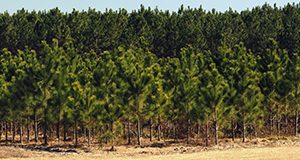This 4-page publication presents a straightforward and intuitive approach based on compounding costs to determine the timber value of a forest at any stage of its development. Written by Andres Susaeta, and published by the UF/IFAS School of Forest, Fisheries, and Geomatics Sciences, March 2021.
https://edis.ifas.ufl.edu/fr435
Tag: Andres Susaeta
What Is the Value of an Existing Forest Stand?
Traditionally, the land expectation value (LEV) formula, the present value of perpetual cash inflows of timber revenues minus the present value of cash outflows of costs, has been employed as the main indicator of the value of a forest investment. However, when a forest stand is already established, the LEV approach is incomplete because it applies only to bare land. Thus, it is necessary to determine the value of a property with an existing forest stand. This 3-page fact sheet written by Andres Susaeta and Chris Demers and published by the UF/IFAS School of Forest Resources and Conservation provides the formula to determine the value of an already established forest stand at any stage of its development. This approach, known as the forest value formula, includes the value of the timber and the land. It can be used to compare the value of the stand when it is immediately harvested or when it is economically immature.
http://edis.ifas.ufl.edu/fr423
Determining the Net Present Value of Timber Investments and Comparing Investments of Different Rotations
Would a forest landowner be economically better off growing a forest for pulpwood production with a short rotation instead of growing the same forest for sawtimber production with a longer rotation? To help answer this and related questions, this 4-page fact sheet written by Andres Susaeta and Chris Demers and published by the UF/IFAS School of Forest Resources and Conservation presents two approaches to determine the profitability of a forest stand. The net present value (NPV) of a single rotation provides the criterion to choose between different forest project investments of equal lives, whereas the equivalent annuity approach (EAA) is employed when forest project investments have different time lengths.
http://edis.ifas.ufl.edu/fr421


